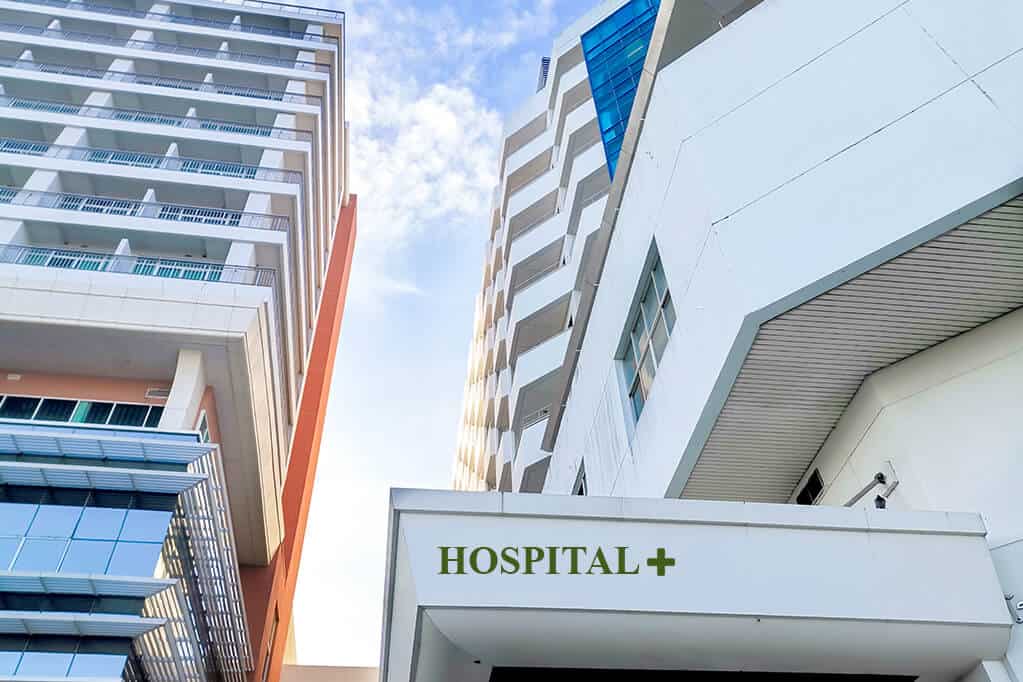People have the misconception that Vastu Shastra is only for homes and offices, so hospital buildings are built without considering the important Vastu principles. In fact, Vastu should be integrated into the design of a hospital building because it promotes positive energy, which strengthens the patient’s immunity and speeds up the recovery process.
Hospitals should be saturated with such positive energy such that people admitted there feel happy and peaceful, but the opposite happens: most of them feel sad and homesick. This occurs because hospitals are built on sites that do not adapt to Vastu principles. It is not acceptable to construct hospital structures without considering geopathy,topography, orientation, and location.
Hospitals that are Vastu friendly simplify and accelerate the recovery process while also eliminating the potential of a patient developing any further complications.

Vastu Tips for Hospitals
- Doctors’ consulting cabins should be built in the north east quadrant, preferably in the east north east zone, because that is the best direction for diagnosis.
- The main hospital building should face east.
- The operation theater should be built in the hospital’s south-west quadrant.
- The beams in the patient’s recovery room should be concealed by a false ceiling, and their beds should be placed on the east or south walls. No bed will be under a beam.
- ICU and recovery rooms should be built in the Northeast zone because it is best for speedy recovery.
- Medical equipment should be sterilized in the southeast quadrant.
- Toilets must be constructed in the west.
- The labor room in the maternity hospital should be in the southwest.
The suggested general macros above can be applied to any hospital building that is currently under construction. Micro Vaastu parameters must be used for full results; these are plot-specific recommendations that can only be made after a careful examination and evaluation of the building site and its architectural plans.
Vastu Tips for Designing Hospitals
- The west zone of the hospital is perfect for the Operation Theater.
- Place the machines or equipment in the southeast corner. In the operation theater. During the operation, the patient’s head should be oriented southward in the operation theater.
- The medicinal device should be kept on the south, southwest, or west side of the patient’s bed, while operating the patient.
- The Specialist should sit on the south, west, or southwest side of the consultation room, and the patients must sit in front of the doctor.
- The ‘L’ shape is extremely relevant in the doctor’s meeting room. This ‘L’ shape should be raised specifically toward the southwest. It will bring success to the leader or experts in the hospital.
- The patient’s room should be ventilated and have northeast openings to enable the flow of positive rays to help them recover rapidly.
- The location of the pharmacy should be in the southwest, west, or south direction. It should be located higher than the hospital’s ground surface.
- For quick recovery and healing, critical patients should be kept in the southwest room.
- The northeast part is the best location for drinking water. The eastern or northern side of the hospital is suitable for waiting areas.
- Medicinal records can be documented in either the south or west. The Southeast location room is only suitable for X-Ray purposes.
- Both the southeast and northwest zones are adequate for nurse cabins. South or west is the best location for changing rooms and restrooms.
Architecture Of Vastu Hospital
Vastu tips for hospitals are based on a variety of factors, including:
- Hospital Location
- Hospital Exteriors
- Emergency Room
- Location of Operation Theaters
- Bed placement for patients and so on
Here are some Vastu tips for hospitals that will help them succeed and meet human expectations.
The following points should be considered as you explore Vastu of the hospital. A thorough analysis of Vastu tips for hospitals is necessary.
- The location of the hospital is extremely crucial.
- The placement of generators.
- The shape, slope, height, and level of the plot.
- The positioning of the beams.
- The entrance’s direction.
- The orientation and positioning of the windows.
- The temple’s orientation and placement.
- The rooms’ layout and orientation.
- The positioning and orientation of the patient bed.
- The operation theaters’ direction and placement.
- The orientation and placement for emergency wards.
- the location and orientation of the ICU.
- The placement and alignment of the labor/maternity room.
- The room’s color scheme.
- The placement and orientation of medical machines
These were some of the basic yet crucial Vastu tips for building a hospital. Yet, all of the factors will depend on thorough investigation of the building/plot where there is a hospital to be built.
